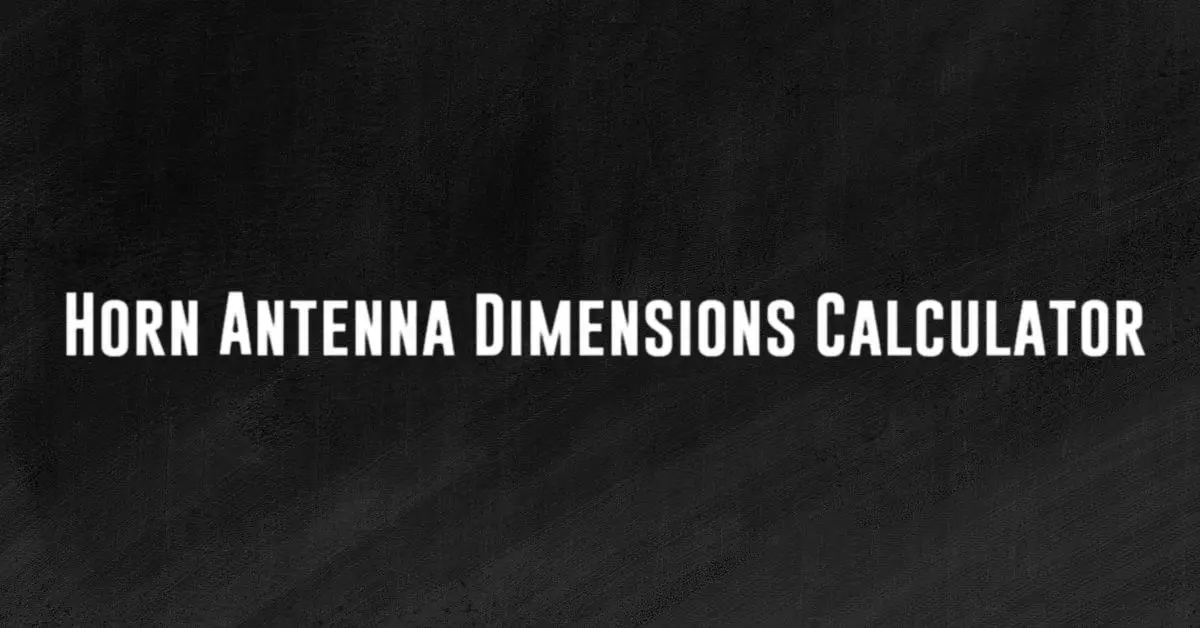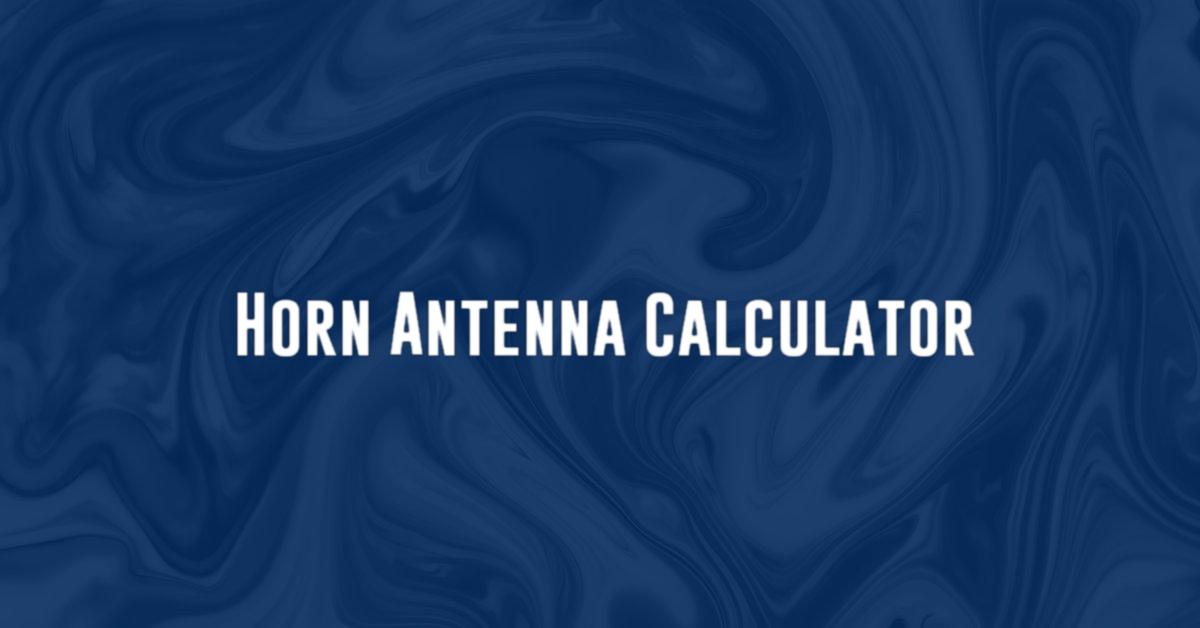Horn Antenna Dimensions Calculator
Are you looking to design a horn antenna for your communication system but unsure about the dimensions needed? Look no further! This horn antenna dimensions calculator can help you determine the necessary parameters for your antenna design. With just a few simple inputs, you can calculate the dimensions required for optimal performance. Read on to learn more about horn antennas and how to use this calculator effectively.
What is a Horn Antenna?
A horn antenna is a type of antenna that is widely used in microwave and radio frequency communications. It is typically made of metal and shaped like a horn, hence its name. The horn antenna is used to transmit and receive electromagnetic waves, making it an essential component in many wireless communication systems. The unique shape of the horn antenna allows for efficient radiation and reception of electromagnetic signals.
How Does a Horn Antenna Work?

A horn antenna works by channeling electromagnetic waves into a narrow beam for transmission or reception. The open end of the horn serves as a funnel to collect or radiate the electromagnetic waves, while the narrow end focuses the waves into a beam for better directionality. This design helps to improve the antenna’s gain and directivity, making it an ideal choice for long-distance communication.
Using the Horn Antenna Dimensions Calculator
To use the horn antenna dimensions calculator, you will need to input the operating frequency of your communication system, the desired gain of the antenna, and the type of horn antenna you wish to design (e.g., pyramidal, conical, or corrugated horn). Based on these inputs, the calculator will provide you with the dimensions of the horn antenna, including the aperture size, flare length, and throat diameter.
By using this calculator, you can ensure that your horn antenna is designed to meet the specific requirements of your communication system. Whether you are designing a horn antenna for radar applications, satellite communications, or wireless networking, this calculator can help you achieve optimal performance and efficiency.
Benefits of Using a Horn Antenna
There are several benefits to using a horn antenna in your communication system. Some of the key advantages include:
- High Gain: Horn antennas are known for their high gain, making them ideal for long-range communication.
- Low Cross-Polarization: Horn antennas offer low cross-polarization, reducing interference from unwanted signals.
- Wide Bandwidth: Horn antennas have a wide bandwidth, enabling them to support various frequencies within the microwave and radio frequency range.
Applications of Horn Antennas
Horn antennas are commonly used in a wide range of applications, including:
- Radar Systems: Horn antennas are used in radar systems for target detection and tracking.
- Satellite Communications: Horn antennas are used in satellite communications for transmitting and receiving signals from space.
- Wireless Networking: Horn antennas are used in wireless networking systems, such as Wi-Fi and cellular networks, to improve signal strength and coverage.
Conclusion
In conclusion, designing a horn antenna for your communication system requires careful consideration of various factors, including operating frequency, gain, and antenna type. By using the horn antenna dimensions calculator, you can determine the dimensions needed for your antenna design quickly and efficiently. Whether you are a novice or experienced antenna designer, this calculator can help you achieve optimal performance and reliability in your communication system.






